45 total fat on nutrition labels
Fat in Food Label Doesn't Add Up - Cholesterol - MedHelp 0% transfat packages are allowed to contain 0.5% of transfat per serving. If that product contains 20 servings, that is 10 grams of transfat in your 0% transfat labelled package. Transfat keeps the product on the supermarket shelf for longer. That is profit over health plain and simple. Helpful - 0 Comment gymdandee Nutrition Labelling - CFS Nutrition label must include the information on energy and seven nutrients specified for labelling (1+7), namely, protein, carbohydrates, total fat, saturated fatty acids, trans fatty acids, sodium and sugars. Furthermore, the nutrition label must list the amounts of any claimed nutrients. In case where there is a nutrition claim in relation to ...
Food Labels: Fat & Cholesterol | Home & Garden Information Center total fat—20 to 35% of calories, depending on age and gender (65 grams for the 2,000-calorie intake level used in the Daily Value)* saturated fat—less than 10% of calories** trans fat— keep as low as possible cholesterol—there is no longer a specific recommended limit for dietary cholesterol, but should be consumed as little as possible

Total fat on nutrition labels
FDA Rounding Rules for Your Food Label - LabelCalc Calories from Fat, Total Fat, Saturated Fat, and Trans Fat. If your value for total fat is: Less than 0.5 grams, round down to 0 (i.e. 0.48 becomes 0). ... As of 2022, the FDA made significant changes to the nutrition facts label that all brands must adhere to. If companies struggle to meet new FDA regulations, they run the risk of being shut ... › eat-smart › fatsTrans Fats | American Heart Association Mar 23, 2017 · Use soft margarine as a substitute for butter, and choose soft margarines (liquid or tub varieties) over harder stick forms. Look for “0 g trans fat” on the Nutrition Facts label and no hydrogenated oils in the ingredients list. Doughnuts, cookies, crackers, muffins, pies and cakes are examples of foods that may contain trans fat. Food labels - NHS Total fat High: more than 17.5g of fat per 100g Low: 3g of fat or less per 100g Saturated fat High: more than 5g of saturated fat per 100g Low: 1.5g of saturated fat or less per 100g Sugars High: more than 22.5g of total sugars per 100g Low: 5g of total sugars or less per 100g Salt High: more than 1.5g of salt per 100g (or 0.6g sodium)
Total fat on nutrition labels. Food Labels | CDC - Centers for Disease Control and Prevention If you eat the whole thing, you are eating 8 times the amount of calories, carbs, fat, etc., shown on the label. Total Carbohydrate shows you types of carbs in the food, including sugar and fiber. Choose foods with more fiber, vitamins, and minerals. Choose foods with lower calories, saturated fat, sodium, and added sugars. Avoid trans fat. › healthy-lifestyle › nutritionDietary fat: Know which to choose - Mayo Clinic Apr 08, 2021 · Focus on replacing foods high in saturated fat with foods rich in unsaturated fat. Try these tips to reduce unhealthy fat in your diet: Use oil instead of butter. For example, saute with olive oil instead of butter, and use canola oil when baking. Eat fish rich in omega-3 fatty acids, such as salmon, instead of meat at least twice a week. Daily Value on the New Nutrition and Supplement Facts Labels For the nutrients with DVs that are going up, the %DVs may go down. For example, the DV for total fat has been updated from 65g to 78g. That means that a packaged food with 36g of total fat... › food › dietary-supplements-guidanceDietary Supplement Labeling Guide: Chapter IV. Nutrition ... Total calories, calories from fat, total fat, saturated fat, cholesterol, sodium, total carbohydrate, dietary fiber, sugars, protein, vitamin A, vitamin C, calcium, and iron must be listed when ...
How to Read Food Labels for Fats and Oils Fats & Oils Food Labels Overview As consumers' understanding of the nutrition and relative healthfulness of different types of fats and oils evolves, manufacturers have attempted to respond by including various types of claims on product labels. The definitions below include some of the most common label claims found on these products. How to Read Nutrition Labels: Fat Content, Carbs & What To Look For Total Fat Nutrition labels are required to include total fat, saturated fat, and trans fat. The total amount of fat in the diet is a percentage of your calorie needs. The recommendation for the typical American diet is around 30%. For someone taking in 2,000 calories, this would mean around 70 grams of total fat per day. › food-recipesFood and Recipes Center: Easy, Healthy Recipe Ideas for Your ... May 16, 2022 · The USDA has simplified nutrition guidelines with its "MyPlate" campaign. MyPlate replaces the older Food Pyramid that many adults grew up with. Healthy Recipes Index › en › healthy-livingUnderstanding Food Nutrition Labels | American Heart Association Mar 06, 2017 · Not all fats are bad , and total sugars can include both natural and added sugars. Limit the amounts of added sugars , saturated fat and sodium you eat, and avoid trans fat. When choosing among different brands or similar products, compare labels and choose foods with less of these nutrients when possible.. 4 - Get enough of the beneficial ...
Low Carb Guide to Understanding Nutrition Labels - Virta Health Sugar should be zero as often as possible (1-2g at most). Fiber is a carb and should be included in your total for the day (initially 30g or less). Again, pay attention to the serving size. Something might be low in carbs, but if you eat 3 or 4 servings, you can easily go over your daily limit. 7. Learn How the Nutrition Facts Label Can Help You Improve Your Health Nutrients Required on Label Vitamin D and potassium values are required. Calcium and iron will continue to be required. Vitamins A and C will no longer be required but can be included on a voluntary basis. Slight Decrease in Sodium Allowance The daily limit for sodium decreased slightly from 2,400 mg per day to 2,300 mg per day. How to Understand and Use the Nutrition Facts Label | FDA 25.02.2022 · Note: some nutrients on the Nutrition Facts label, like total sugars and trans fat, do not have a %DV – they will be discussed later. General Guide to %DV 5% DV or less of a nutrient per serving ... › articles › sportsSports Nutrition - Nutritionist Resource Jun 28, 2022 · What is sports nutrition? Sports nutrition is the study and implementation of a diet/plan that is designed to increase athletic performance. Best performance is achieved by providing the right amount of food type (protein, carbohydrates, fats, fibre, etc.), fluids and nutrients to maximise energy and aid in sports recovery.
This Is How to Read a Nutrition Facts Label on the Keto Diet Another thing to keep in mind is that the macronutrients are listed in grams, not percentages, on food labels. Each gram of fat contains more than double the energy one gram of protein or carbohydrate, so for example, if you see a nutrition label that shows: Calories: 85; Total Fat: 5 grams (9 calories per gram) Total Carbohydrate: 5 grams (4 ...
How to Understand and Use the Nutrition Facts Label | FDA Nutrients to get less of: Saturated Fat, Sodium, and Added Sugars. Saturated fat, sodium, and added sugars are nutrients listed on the label that may be associated with adverse health effects...
Nutrition Facts Label: A guide on how to read them - NF Sports Total fat, cholesterol, and sodium are listed in percentages of a healthy daily allowance based on 2000 calories per day diet. These things are listed so that you can limit the amount you consume in a day. This box is identified in yellow. You will notice that the label distinguishes total fat, saturated fat, and trans fat.
Food labels - NHS Total fat High: more than 17.5g of fat per 100g Low: 3g of fat or less per 100g Saturated fat High: more than 5g of saturated fat per 100g Low: 1.5g of saturated fat or less per 100g Sugars High: more than 22.5g of total sugars per 100g Low: 5g of total sugars or less per 100g Salt High: more than 1.5g of salt per 100g (or 0.6g sodium)
› eat-smart › fatsTrans Fats | American Heart Association Mar 23, 2017 · Use soft margarine as a substitute for butter, and choose soft margarines (liquid or tub varieties) over harder stick forms. Look for “0 g trans fat” on the Nutrition Facts label and no hydrogenated oils in the ingredients list. Doughnuts, cookies, crackers, muffins, pies and cakes are examples of foods that may contain trans fat.
FDA Rounding Rules for Your Food Label - LabelCalc Calories from Fat, Total Fat, Saturated Fat, and Trans Fat. If your value for total fat is: Less than 0.5 grams, round down to 0 (i.e. 0.48 becomes 0). ... As of 2022, the FDA made significant changes to the nutrition facts label that all brands must adhere to. If companies struggle to meet new FDA regulations, they run the risk of being shut ...




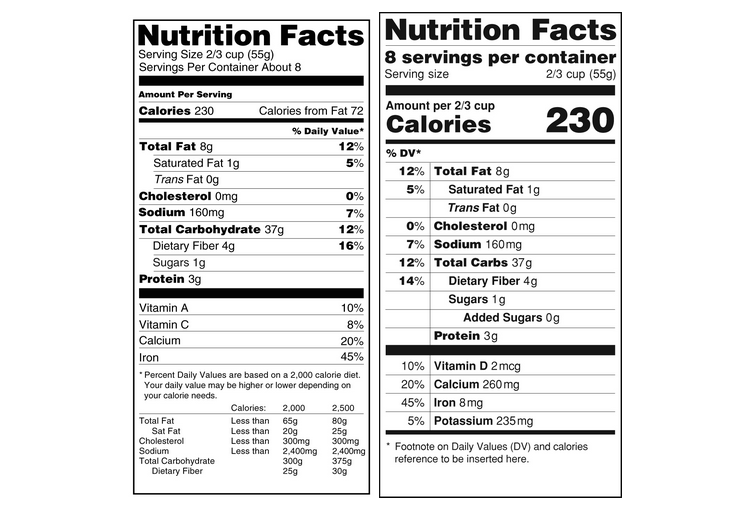

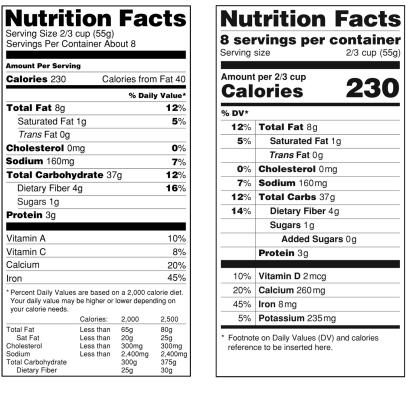
/Untitled-design-1--5755c3703df78c9b46903dab.jpg)

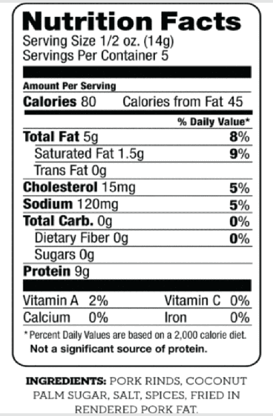



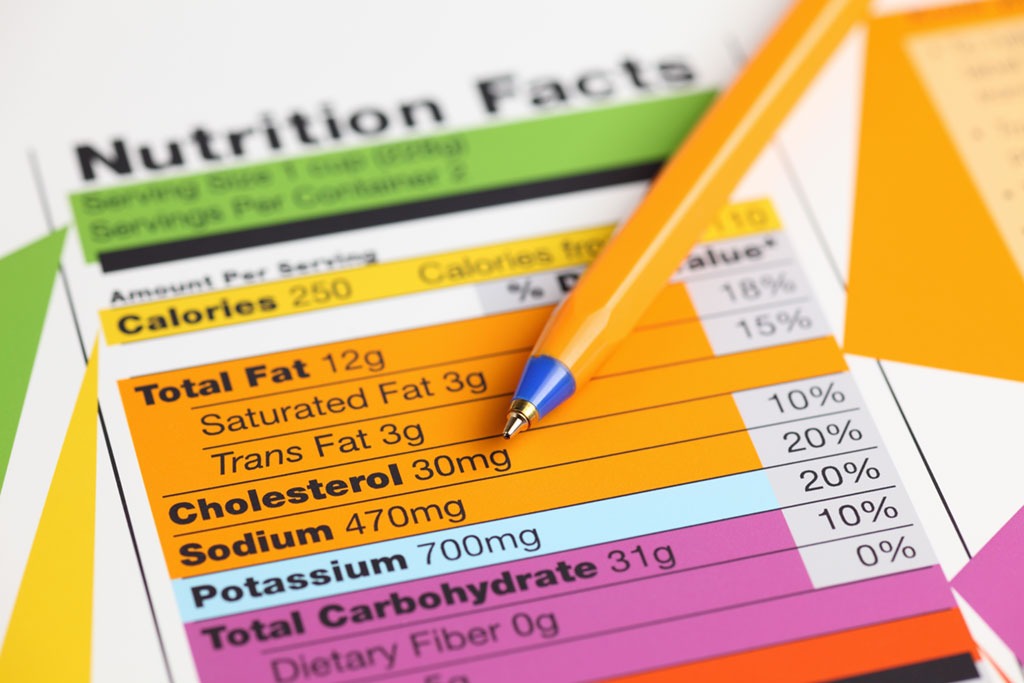

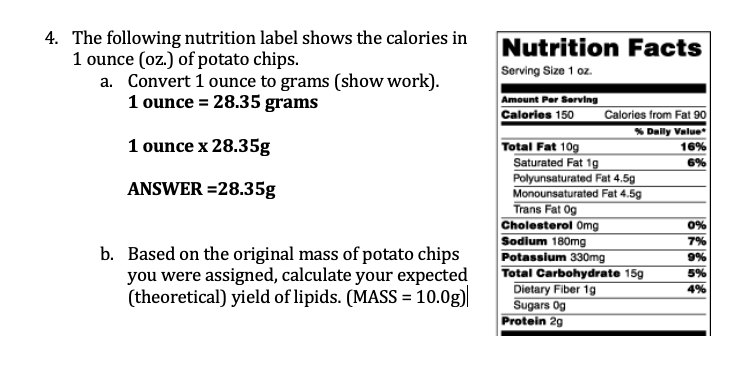

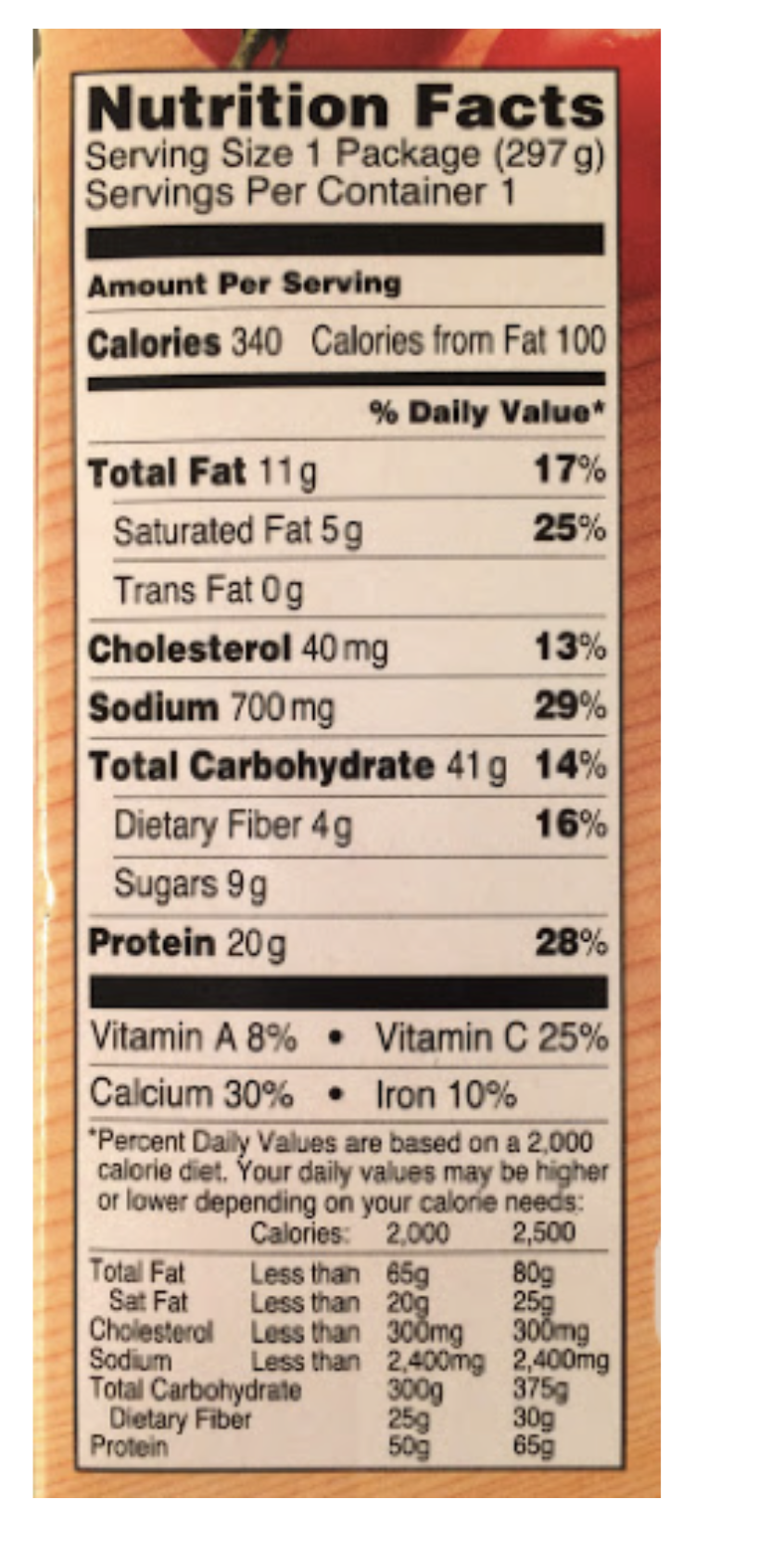
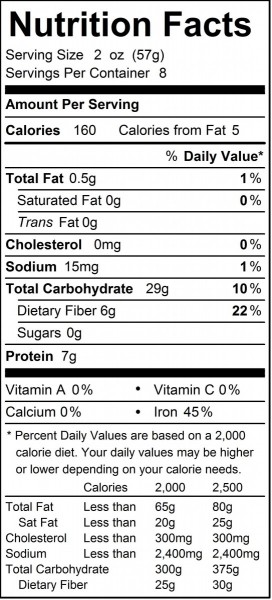




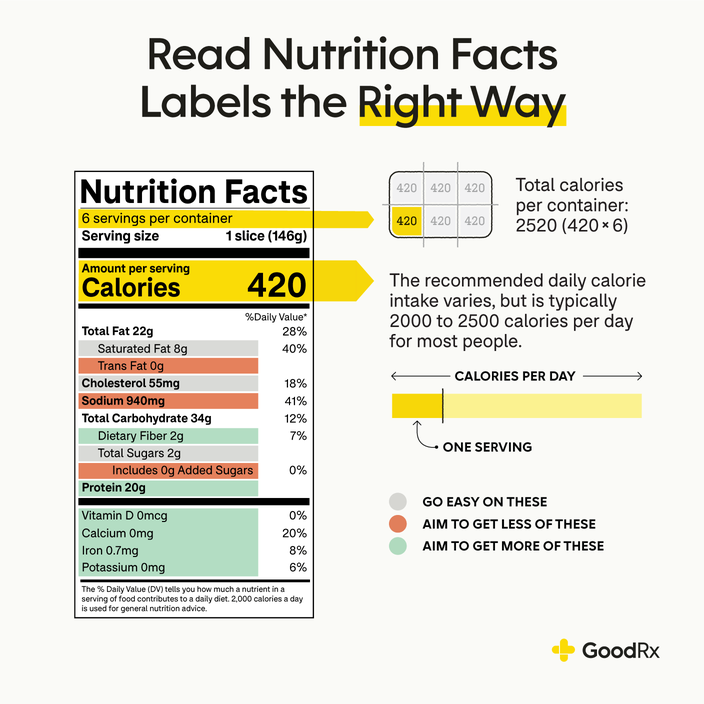

/Untitled-design-1--5755c3703df78c9b46903dab.jpg)









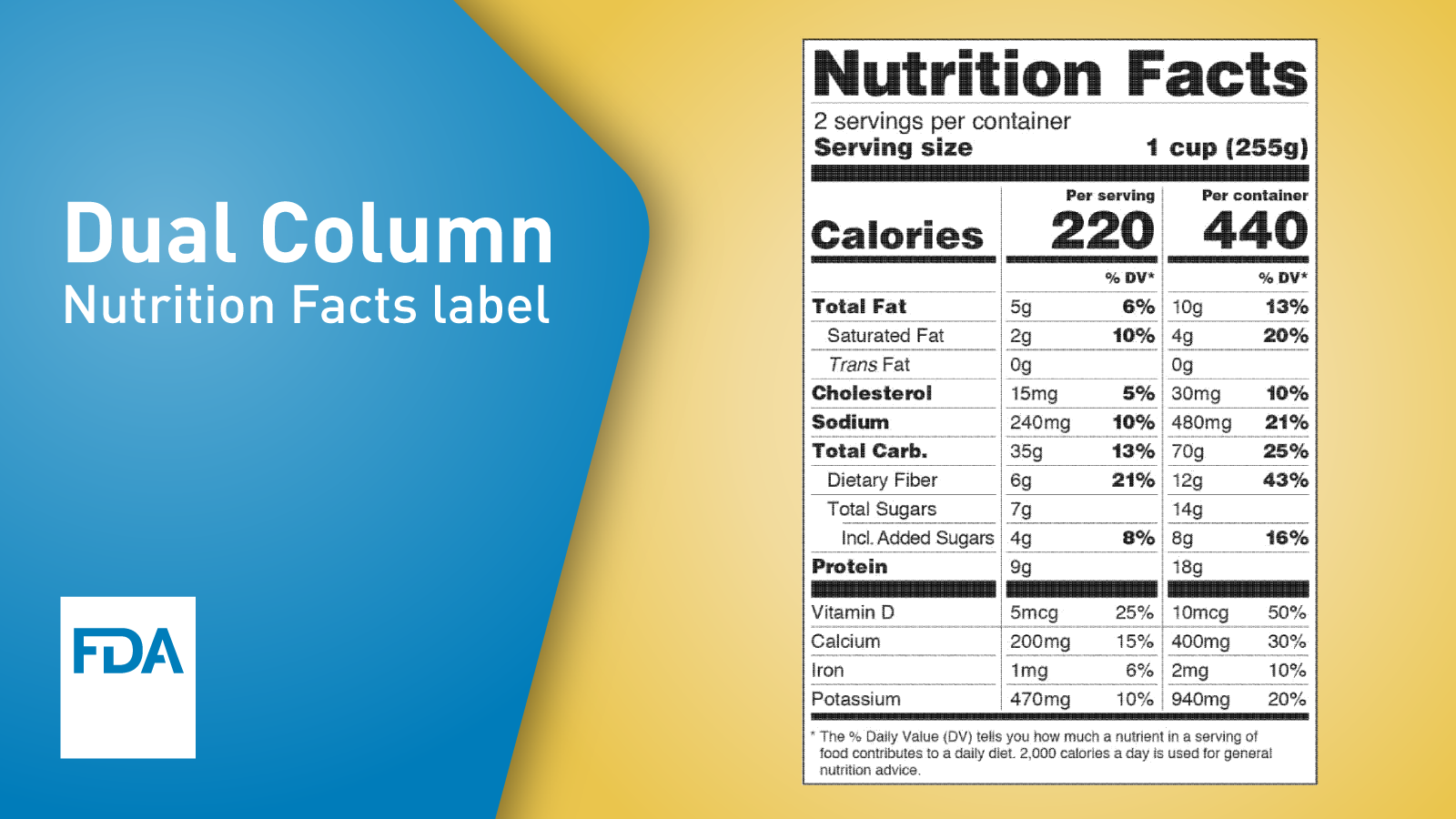
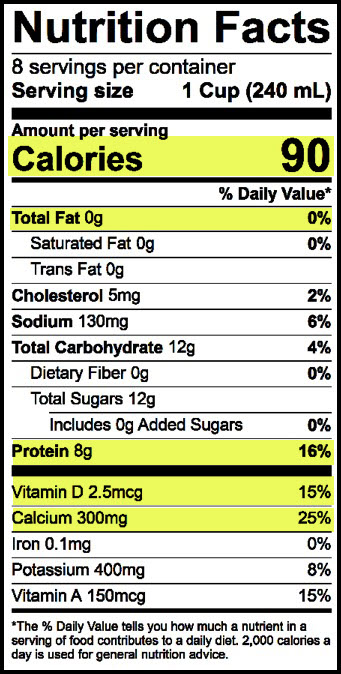


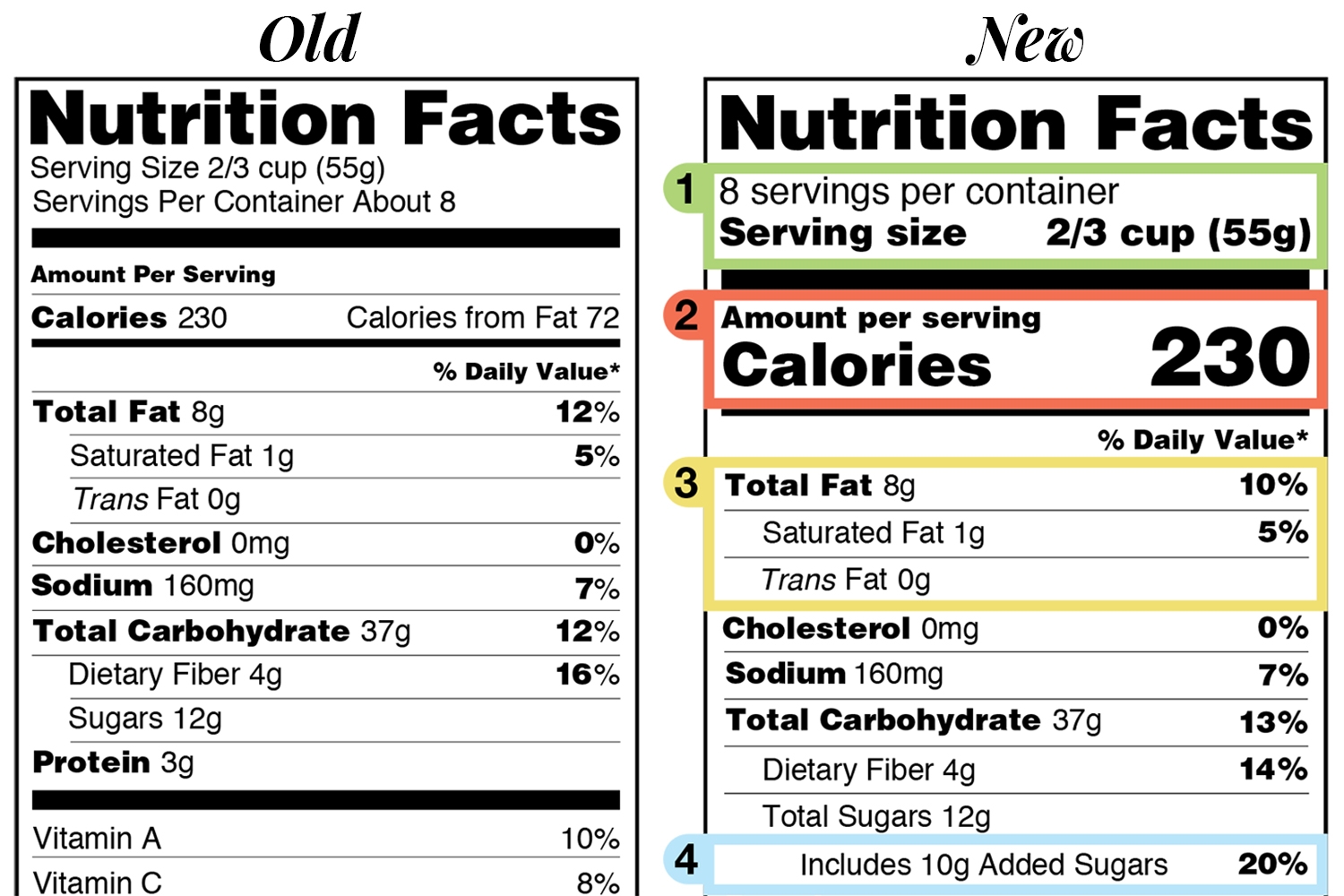

Post a Comment for "45 total fat on nutrition labels"